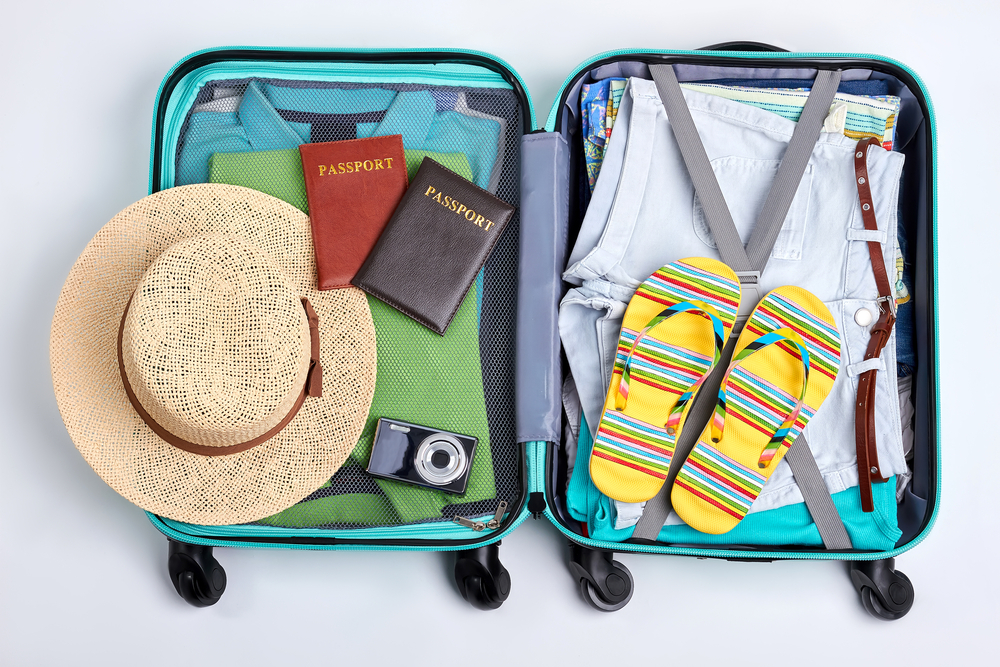Comprehensive Guide to Prolonging the Durability of Your Pop-Up Camper for Long-Term Use
Discover comprehensive tips to extend the lifespan of your pop-up camper. Regular maintenance, cleaning routines, storage advice, and preventive measures are discussed to ensure your camper remains durable and reliable for years. Maximize your investment and enjoy countless outdoor adventures with these expert maintenance strategies.

Expert Tips to Maintain and Extend the Lifespan of Your Pop-Up Camper for Many Years
Embarking on outdoor adventures with family or friends is an excellent way to create lasting memories. A well-maintained and reliable camper significantly enhances these experiences by offering comfort, convenience, and peace of mind. Among various types of campers, pop-up campers stand out for their portability, lightweight design, and affordability, making them a favorite among outdoor enthusiasts. However, owning a pop-up camper requires consistent maintenance to ensure it remains reliable and durable over time. Proper care routines can prevent common issues, extend the lifespan of your investment, and ensure you get the most enjoyment from your trips.
When you decide to purchase a pop-up camper, think of it as a valuable investment that requires ongoing attention and maintenance. By adopting regular maintenance routines, you can keep your camper in optimal condition, ready for spontaneous adventures or planned vacations. This proactive approach not only preserves the appearance and functionality of your camper but also enhances its resale value should you decide to upgrade or sell in the future. In this comprehensive guide, we will explore detailed strategies to keep your pop-up camper in top shape, focusing on cleaning techniques, inspection routines, preventive measures, and storage tips that collectively help prolong its lifespan and maximize your outdoor enjoyment.
1. Regular Exterior Cleaning and Inspection
Maintaining a clean exterior is fundamental to prolonging the life of your pop-up camper. Dirt, grime, and environmental debris can cause deterioration of the exterior materials if not cleaned regularly. Using warm water and a mild detergent, gently scrub the surface to remove mud, bird droppings, and stubborn dirt. Pay special attention to seams, joints, and hinges, which are more susceptible to wear and tear. After washing, rinse thoroughly to ensure no soap residue remains, which can attract dirt or damage the surface over time.
In addition to cleaning, inspect the exterior for signs of damage, such as cracks, holes, or corrosion. Early detection of small issues can prevent costly repairs later. Look for areas where seals may be worn out or cracked, especially around windows, doors, and any openings. Ensure that all latches, locks, and hinges are functioning smoothly. Lubricate hinges and other moving parts periodically with suitable grease or lubricant to keep them operating seamlessly.
2. Keep Plumbing Systems in Check
The plumbing system in a pop-up camper includes water tanks, faucets, drains, and freshwater lines. Proper maintenance of these components can prevent leaks, corrosion, and other plumbing failures. Always drain water from the tanks and lines after each trip to prevent stagnant water from causing mold, bacteria growth, or freezing damage in cold weather. Use non-corrosive cleaners designed specifically for RV plumbing to flush and sanitize the system periodically.
Regularly inspect hoses, fittings, and valves for leaks or signs of deterioration. Replace worn or cracked tubing promptly to avoid water damage. If your camper has a grey or black water tank, ensure it is emptied and cleaned thoroughly after each trip to prevent unpleasant odors and bacterial buildup. Proper winterization, including draining and insulating pipes, is essential in colder climates to prevent burst pipes and other cold-weather damage.
3. Interior Maintenance and Dust Control
The interior of your pop-up camper should be kept as clean and dust-free as possible to ensure comfort and longevity. Wipe down surfaces, cabinets, and appliances regularly with a soft cloth dampened with mild cleaning solutions. Use a vacuum with a HEPA filter to remove dust, pet dander, and debris from carpets or upholstery. Keeping the interior dry and well-ventilated helps prevent mold and mildew growth, which is common in humid environments.
Replace bedding, curtains, and soft furnishings as needed to keep the interior fresh and inviting. Check the condition of window seals and screens to prevent drafts and pest intrusion. Consider using moisture absorbers or dehumidifiers during storage periods to control humidity levels inside the camper.
4. Proper Storage and Seasonal Maintenance
When not in use, proper storage is key to safeguarding your pop-up camper from the elements and unnecessary wear. If possible, store your camper in a covered, dry area, such as a garage or tarp-covered space. Ensure the camper is thoroughly cleaned and dried before storage to prevent mold and corrosion. Elevate the camper on blocks to prevent tire deterioration and to allow air circulation underneath, which reduces moisture buildup.
If storing for an extended period, consider disconnecting the battery, draining all water systems, and sealing vents to prevent pests and water ingress. Use wheel covers and tire protectors if the camper will be parked for several months. Periodically check on the stored camper, inspect for any signs of water intrusion or pest entry, and perform minor maintenance as needed.
5. Preventative Maintenance to Avoid Costly Repairs
Preventative maintenance is the best approach to ensure your pop-up camper remains reliable and safe. Regularly inspect the roof, seams, and joints for signs of wear or damage. Applying sealants or waterproofing compounds to vulnerable areas can prevent water intrusion, which is one of the most common causes of damage in campers. Lubricate moving parts, such as jacks and hinges, at least twice a year.
Upgrade or replace components that show signs of aging proactively. Keep a maintenance log to track service dates, repairs, and replacements. Regularly check tire tread and pressure, and ensure all safety equipment, including brakes and lights, is in working order before each trip. Developing a routine maintenance schedule helps catch issues early, saving money and hassle in the long run.
6. Investing in Quality Accessories and Replacement Parts
Using high-quality replacement parts and accessories is crucial for maintaining your camper's performance. When replacing seals, hinges, or other critical components, opt for genuine or high-grade aftermarket parts designed for your specific camper model. This ensures proper fit and function, reducing the risk of future problems.
Consider investing in accessories like weatherproof covers, reinforced awnings, or additional insulation to extend the lifespan of your camper. These upgrades can provide extra protection during harsh weather conditions and help maintain interior comfort all year round.
Conclusion
Maintaining your pop-up camper involves regular cleaning, inspections, and preventive care. By adhering to these detailed tips, you can significantly extend the durability of your camper, ensuring it remains in excellent condition for years to come. Proper maintenance not only protects your investment but also enhances the overall camping experience, making every trip safe, comfortable, and memorable. Whether you're a seasoned camper or just starting, adopting these best practices will help you enjoy countless adventures with peace of mind.





